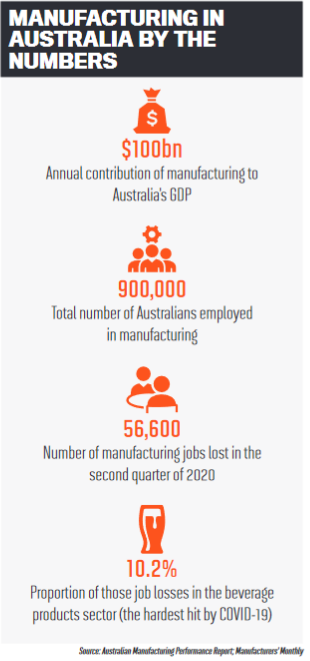

The manufacturing sector has been shaken by the COVID-19 crisis, which has buffeted the global supply chain and forced businesses of every size to rethink their oper-ating models. While various manufacturing businesses have been impacted in different ways and thus require varying solutions, there are several cross-sector challenges that COVID-19 has exacerbated.
Chief among them is global and domestic supply chain disruption, which is inter-rupting both upstream and downstream processes. This disruption has been building for some time, says Michael Burg, managing director of Gallagher’s manufacturing pract tice in the US, as supply chains have been getting tighter and more focused on just-in-time delivery.

“COVID has certainly accelerated some of the supply chain challenges and risks that we advise our clients on,” he says. “We see both supply- and demand-side challenges to the supply chain, so we’re helping our clients evaluate those risks and exploring the insur-ance solutions that are available to address those risks rather than just retaining them on the balance sheet.”
The manufacturing space evolves in waves, says Riskonnect CEO Jim Wetekamp, who first noticed the new wave that came with COVID-19 when supply chains in China first started being impacted. Organisations began looking for better ways to assess their risk, understand the challenges they faced and build agility as COVID-19’s impact started to pivot from transportation to hospitality, healthcare and financial services.
“What [manufacturing businesses] have had to do is work through the crisis to establish what continuity looks like moving forward, to think through better workforce planning, alternative inventory policies and planning parameters such as how they think about their supply chains,” Wetekamp says. “They’ve had to give greater visibility to inbound materials, and while they always had that for critical goods, they may not have the same level of traceability for some of the more indirect goods or smaller components.”
Awareness of the exposure that exists around single-source suppliers has been growing for some time now, Burg says, so it has long been a part of enterprise risk management evaluations for manufacturers. Wetekamp says that during COVID-19, manufacturers have had to understand not only their tier-one supplier risk, but also the second- and third-tier risk because of the extent to which the pandemic has challenged freedom of supply.
COVID-19 was something of a black swan event for the insurance sector, but this didn’t stop insurance businesses from working to actively protect their clients throughout the crisis. According to Brian Gerritsen, manu-facturing practice lead at Travelers, as soon as the pandemic emerged, Travelers’ risk control team proactively connected with agent and broker partners and customers to provide employee safety recommendations and help businesses understand the emerging risks associated with the pandemic.“
As part of this effort, we released a robust suite of industry-leading risk management resources for businesses to help them manage the emerging risks to people and property and, where applicable, safely reopen,” says Erika Melander, manufacturing practice lead at Travelers. “We engaged with business customers and their agents and brokers to address specific needs based on underwriting and state regulatory requirements.”

One tool Travelers was able to offer is a supply chain pressure test that can help manufacturers identify the links in their supply chains that might be most at risk. Melander says tools like this complement Travelers’ insurance products and services to address supply chain exposures beyond traditional coverage. 
The uncertain lay of the land when it comes to supply chain risks is neatly surmised in an anecdote Burg tells of a client who was dependent on manufacturing in China, but who felt confident in their ability to withstand a loss from a key supplier because they had approximately 10 different suppliers. However, Gallagher’s tools were able to pinpoint that all of these suppliers were located within a single region that faced catastrophic weather events.
From his perspective, Burg believes the COVID-19 crisis has opened manufacturers’ eyes to the challenge that supply chain disruption poses to their business and their ability to deliver a product. In the example above, he says the early impact of supply chain disruption in China due to COVID-19 made the client think differently about their contingent business income exposure, resulting in a deeper conversation that wasn’t being had before COVID-19.
“Manufacturing businesses have faced each of these challenges before,” Wetekamp says, “but now they’ve seen these block, bit by bit, next to each other. And so they’re thinking about more comprehensive scenarios, of the interplay of these different risks happening at once and about what it really means to fight a war on multiple fronts at the same time.”
Read next: Manufacturing insurance
